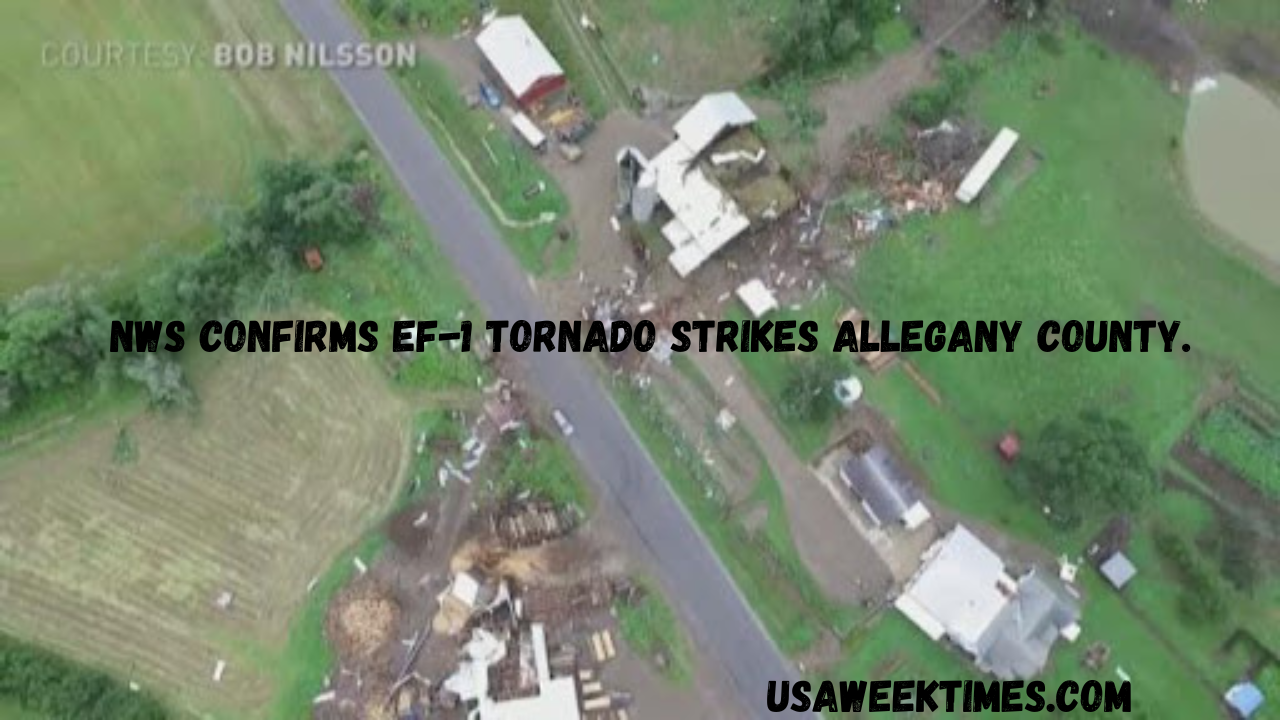NWS Confirms EF-1 Tornado Strikes Allegany County. A Comprehensive Overview
The National Weather Service (NWS) has confirmed that an EF-1 tornado struck Allegany County, leaving a path of destruction and raising concerns about the growing frequency of severe weather events in the region. This article delves into the details of the tornado, its impact, the response from local authorities, and steps to mitigate such disasters in the future.
The Event: When and Where
On [specific date], Allegany County experienced a sudden and severe weather event that left residents stunned and scrambling for safety. According to the NWS, the tornado touched down in [specific location, if known], carving a path of destruction approximately [exact length, if known] in length and with wind speeds ranging between 86 to 110 mph, characteristic of an EF-1 tornado.
Residents reported witnessing dark clouds forming ominously, followed by intense winds, heavy rain, and the unmistakable roar of the tornado. The storm, though brief, caused significant damage to property, uprooted trees, and disrupted normal life in the affected areas.
Understanding an EF-1 Tornado
EF-1 tornadoes, as classified under the Enhanced Fujita Scale, are considered moderate in strength but can still inflict considerable damage. With wind speeds ranging from 86 to 110 mph, such tornadoes can:
- Cause roof damage to well-constructed homes.
- Uproot shallow-rooted trees.
- Overturn vehicles.
- Tear down outbuildings and weaker structures.
Despite being lower on the scale compared to more catastrophic EF-4 or EF-5 tornadoes, the impact of an EF-1 tornado should not be underestimated, as witnessed in Allegany County.
The Impact on Allegany County
Property Damage
The tornado left a trail of destruction, damaging homes, businesses, and public infrastructure. Preliminary assessments by local authorities indicate that several roofs were torn off, windows shattered, and fences destroyed. In rural areas, barns and storage sheds were flattened, and agricultural fields suffered substantial losses.
Power Outages
The storm also caused widespread power outages. Downed power lines and damaged transformers left thousands of residents without electricity for hours, with some areas experiencing outages lasting into the next day. Utility companies worked tirelessly to restore power, prioritizing critical facilities like hospitals and emergency services.
Injuries and Casualties
Fortunately, no fatalities were reported. However, a few individuals sustained minor injuries, primarily from flying debris and accidents during the storm. Emergency medical teams were quick to respond, ensuring that the injured received prompt care.
Environmental Impact
In addition to human and structural damage, the tornado had a notable environmental impact. Numerous trees were uprooted, altering the local landscape and potentially affecting ecosystems. Cleanup efforts are underway to remove debris and restore the affected areas.
Response from Authorities
Local and state authorities acted swiftly in the aftermath of the tornado. Emergency services were deployed immediately to assess the damage, rescue trapped individuals, and provide aid to those in need. Here are some key actions taken:
- Damage Assessment Teams: Teams from the NWS and local agencies surveyed the affected areas to determine the tornado’s strength and path, providing crucial data for future preparedness.
- Shelter and Aid: Temporary shelters were set up for displaced residents, offering food, water, and medical assistance.
- Infrastructure Repairs: Utility companies and public works departments collaborated to restore power, clear roads, and repair damaged infrastructure.
- Community Support: Volunteers and local organizations stepped in to support recovery efforts, showcasing the resilience and solidarity of Allegany County residents.
Preparing for Future Tornadoes
The Allegany County tornado serves as a stark reminder of the importance of preparedness and awareness in mitigating the impact of severe weather events. Here are some key takeaways for residents and authorities:
Early Warning Systems
Investments in advanced weather monitoring systems and timely dissemination of warnings can save lives. Residents are encouraged to sign up for weather alerts and stay informed during severe weather events.
Emergency Preparedness Plans
Households and businesses should develop emergency plans, including:
- Identifying safe shelter areas within homes or workplaces.
- Assembling emergency kits with essentials like water, food, flashlights, and first aid supplies.
- Establishing communication plans with family members.
Community Education
Public awareness campaigns can educate residents about tornado safety, such as recognizing warning signs, responding to alerts, and knowing where to seek shelter.
Strengthening Infrastructure
Building codes should be reviewed and updated to ensure structures are more resilient to high winds. Investments in storm shelters and reinforced buildings can further enhance community safety.
The Bigger Picture: Climate and Tornadoes
The Allegany County tornado also raises questions about the potential link between climate change and the increasing frequency of extreme weather events. While tornadoes are influenced by complex atmospheric conditions, some researchers suggest that warmer temperatures and shifting weather patterns could contribute to more volatile storm systems.
As scientists continue to study these trends, communities must prioritize preparedness and resilience to adapt to a changing climate.
Conclusion
The EF-1 tornado that struck Allegany County was a powerful reminder of nature’s unpredictability and strength. While the community has shown remarkable resilience in the face of adversity, the event underscores the need for ongoing efforts in disaster preparedness, infrastructure improvements, and public education.
By learning from this experience and implementing proactive measures, Allegany County can better protect its residents and minimize the impact of future severe weather events. The lessons from this tornado serve as a valuable guide for communities everywhere facing similar challenges.




